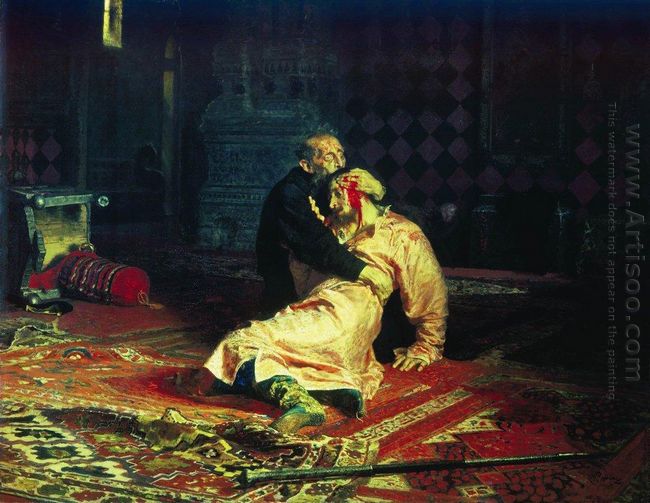In the oil painting of Ivan the Terrible and His Son Ivan on November 16, this Ilya Repin painting chose such a plot to portray: when Ivan fought with his son, he threw the wat in his hand to his son. But the wat unfortunately hit the son’s head, and a lot of blood flew. This occasional violent impulse made the successor killed. Ivan immediately realized his terrible action and stepped forward to embrace the dying son. His eyes were full of terror, remorse and shame. He wanted to ask his son to forgive him, but it was in vain. Both animal and human nature were shown in Ivan. In order to enhance the Realism painting’s feeling of terror, the painter deliberately adopted the deep red tone and the dark background to strengthen the prospects of terror. The red carpet represented the bloody killing scene. The artist concentrated on portraying Ivan’s face and stared at the big eyes in a blue funk. The irreversible choice pain indicated that Ivan’s rule would be destroyed, but also showed the world why tyrannical Tsar was doomed to fail.
This painting, Ivan the Terrible and His Son Ivan on November 16, angered the tsar. An attorney wrote to the emperor in the memorial, “The painter used all the truth to describe this event. What does he want to do? Why he paint Ivan? In addition to a certain tendency, there is no other reason.” So the picture was removed once exhibited.
In 80s, Russia began the bloody carnage because of the assassination of Czar Alexander II, which aroused people’s anger and rebellion, Repin was going to show the reality of this time. One day, he went to listen to the second parts of symphonic suite Aetna—Revenge of The Time of Nikolai and Reivitch Rimsky-Korsakov and got inspired. He said, “It gave me an indelible impression. Can I show my emotion affected by music in the paintings? I recall Ivan. Many bloody events happened these years. I felt very terrible, but there was a force always urging me to finish this painting.”
